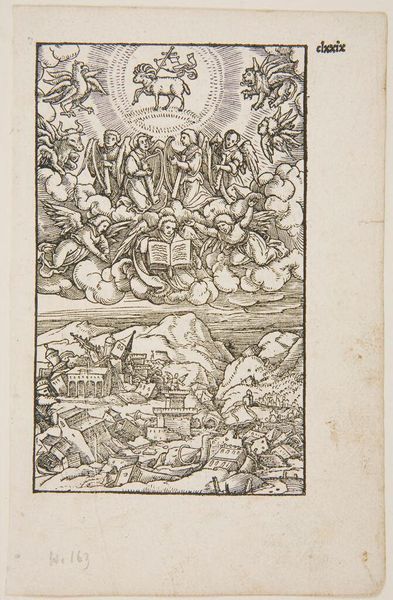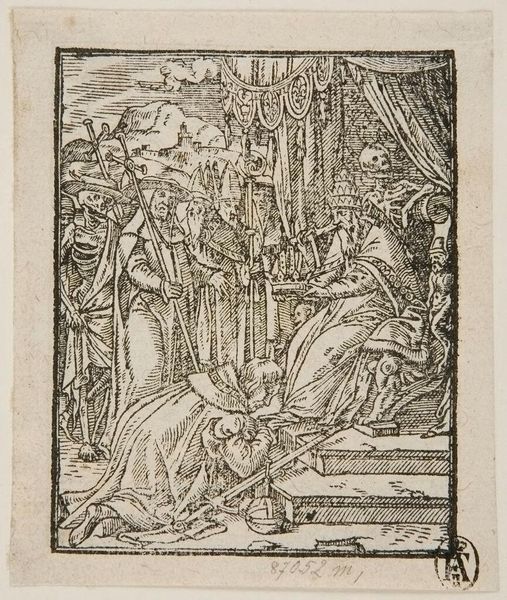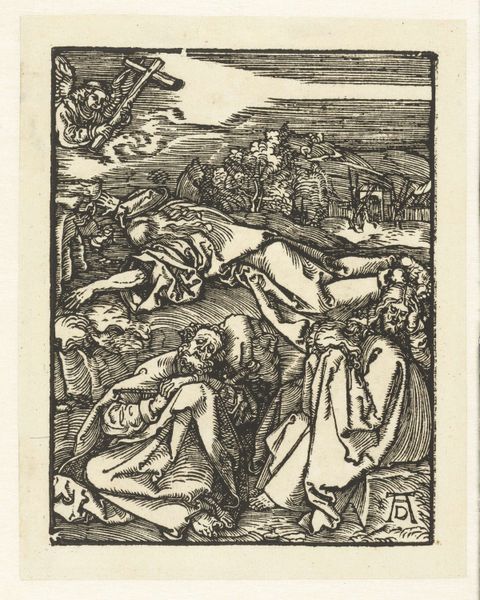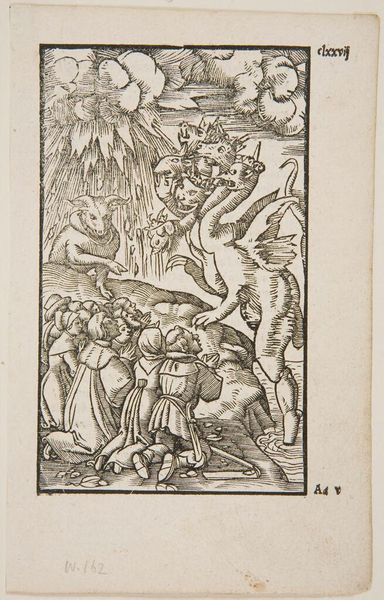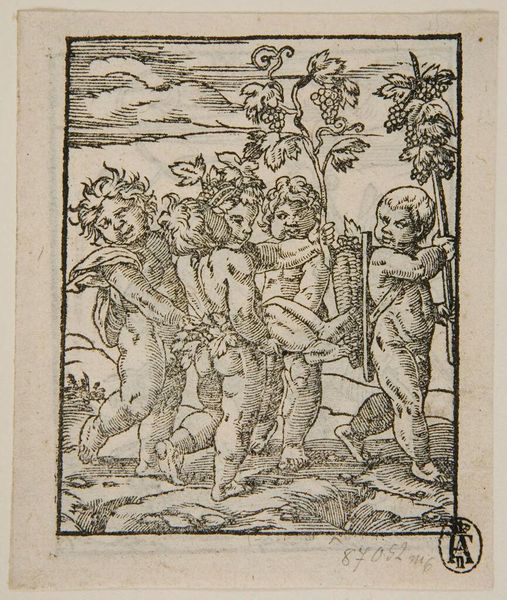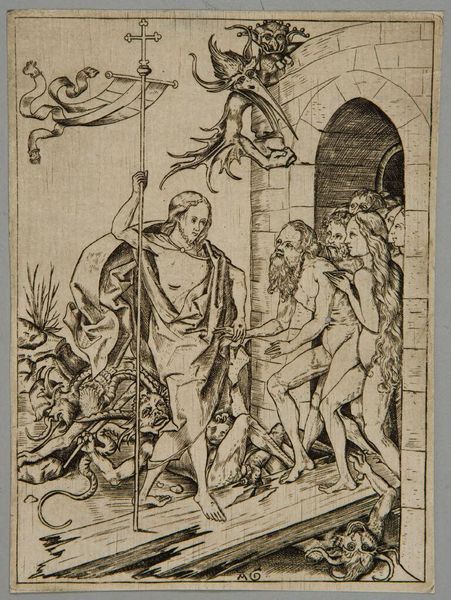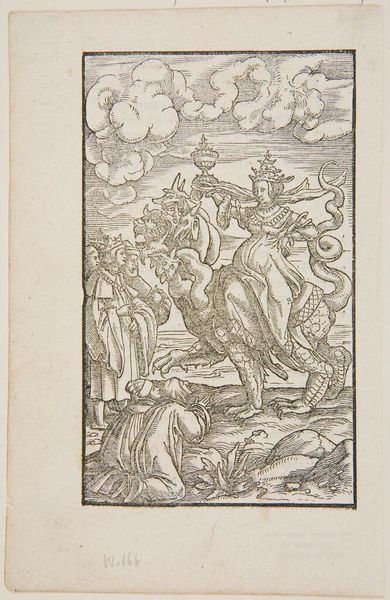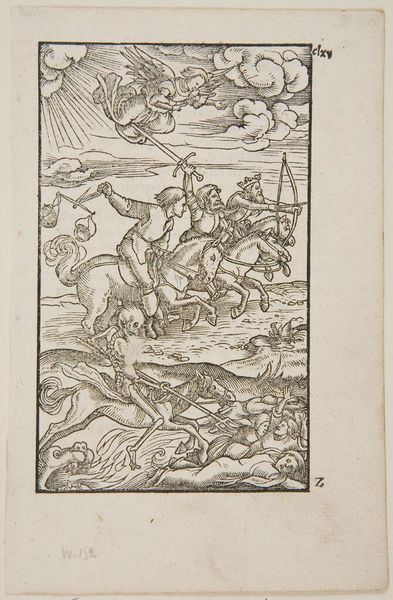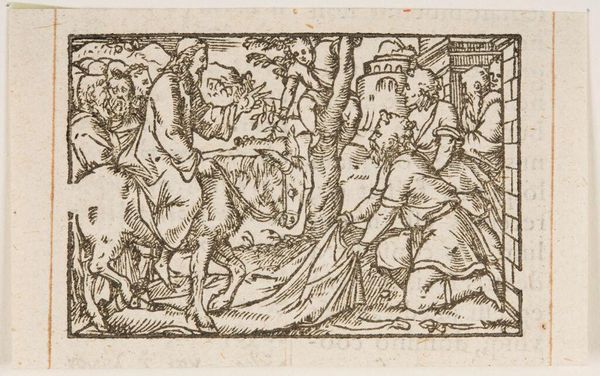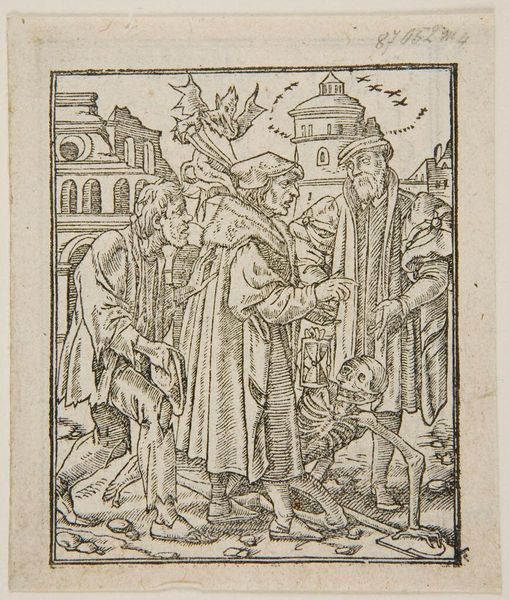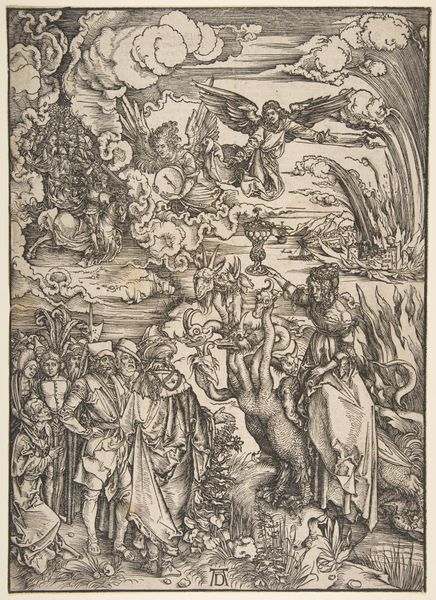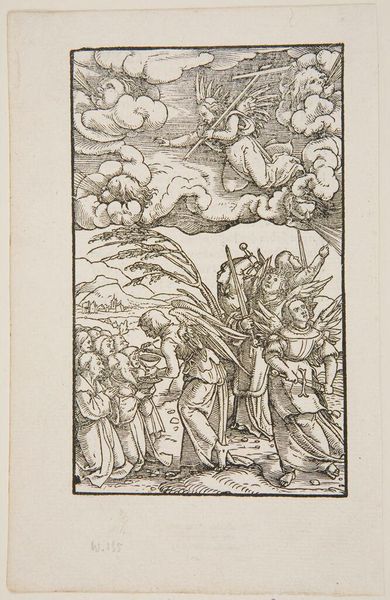
Copyright: CC0 1.0
Editor: Here we have Hans Holbein the Younger's "The Monk," date unknown, at the Harvard Art Museums. It's a woodcut, and the most striking thing to me is the dramatic tension between the monk and the skeletal figure. What historical context informs this piece? Curator: Well, Holbein produced this within the socio-political landscape of the Reformation. Consider the public role of such imagery, especially during a time of religious upheaval. How might this image of Death confronting a religious figure reflect anxieties about institutional power? Editor: It suggests a critique, perhaps questioning the Church's ability to protect its members from mortality. The monk's futile struggle highlights that vulnerability. Curator: Precisely. And think about the visual language used. The stark contrast, the decaying figure against the presumed piety of the monk – what statement does that make about the politics of imagery during that period? Editor: I see now that this isn't just a depiction of death, but a commentary on the Church's place in society. Curator: Exactly, it prompts questions about power, faith, and mortality.
Comments
No comments
Be the first to comment and join the conversation on the ultimate creative platform.
